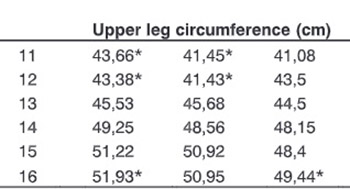Birth order influence on the anthropometric properties of the boys from Tuzla region
DOI:
https://doi.org/10.17305/bjbms.2004.3419Keywords:
growth and development, birth order, anthropometric parameters, ontogenesisAbstract
Birth order and its effect on growth and development of children and youths have rarely been studied so far. The objective of this research was an analysis of the birth order effects on some anthropometric properties of the boys 11-16 years old. The sample consisted of 748 boysfrom the Tuzla region. As the sample included very few boys born as the third, forth, or fifth child, we decided to consider only the differences in the mean values for some anthropometric parameters between the groups of the first- and the second-born. Measurements were taken according to IBP and the following parameters were investigated: body height, body mass, chest circumference, upper arm circumference, upper leg circumference, sitting height, arm length, leg length, pelvis width, shoulders width, length and width of head. We established that in most generations the firstborn boys have larger mean values for most anthropometric variables in comparison to the second-born.
Downloads














